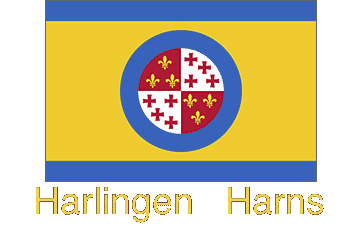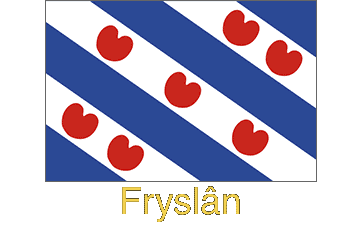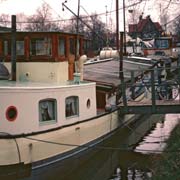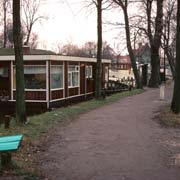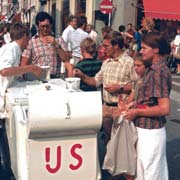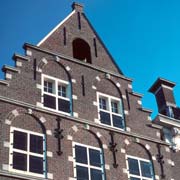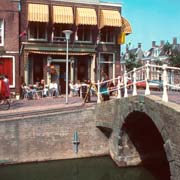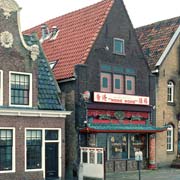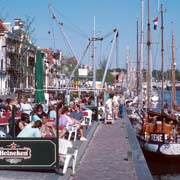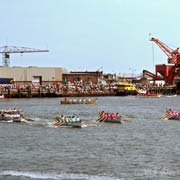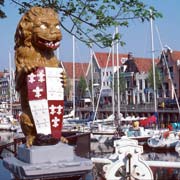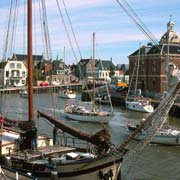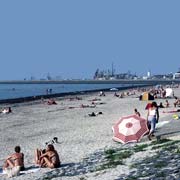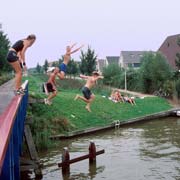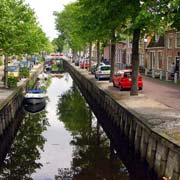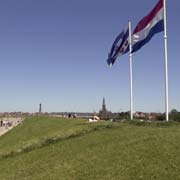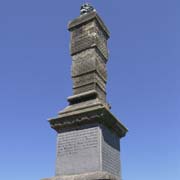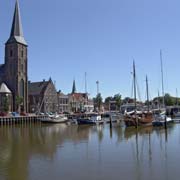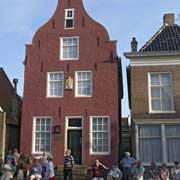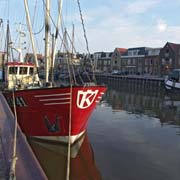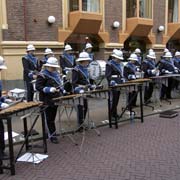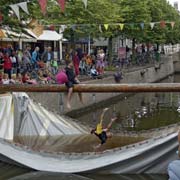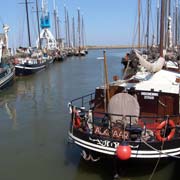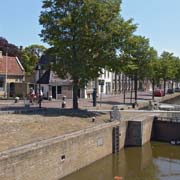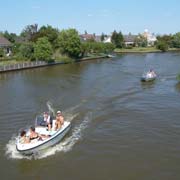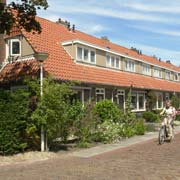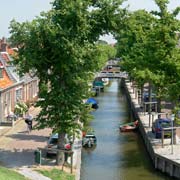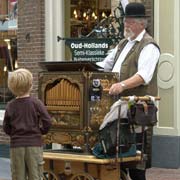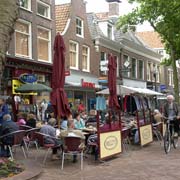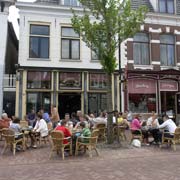Photos of Harlingen, Friesland's port city, the Netherlands
Harlingen, Friesland's port city
Harlingen, or Harns in the Frisian language, is the port city of Friesland and an important centre of industry, shipping and fishing with daily ferries to the Frisian islands of Vlieland and Terschelling.
you may then send it as a postcard if you wish.
Probably the most beautiful area of the city of Harlingen is the Noorderhaven (Northern harbour), dug in 1578. There are rows of houses and warehouses with typical façades dating from the 16th to the 18th century. Pride of place here is the baroque Town Hall, dating from 1730 and beautifully restored in 1956-57. As the industrial harbour is now on the outskirts of the city, the Noorderhaven is presently a haven for tourists' yachts that find a safe and picturesque anchorage here.
Fryslân's port city of Harlingen has a rich history; in the 17th and 18th Century (The "Golden Age") its fleet sailed the world's oceans and merchants settled in the city. Harlingen's old stately homes, with their impressive façades, date from these days. The city's centre is one of the best preserved in Fryslân, a warren of old neighbourhoods, alleys and canals. The Zoutsloot, parallel to the west of the Noorderhaven, used to be an upmarket residential area of the city; in the early 20th century it gradually declined and many houses were due for demolition. But in the latter half of the century it was decided to restore this important and picturesque area; it is now one of the prettiest parts of Harlingen.Harlingen's maritime history is obvious as its harbours dominate the city. The Noorderhaven (Northern Harbour) is wonderfully restored, with its monumental warehouses. A lock leads into the Binnenhaven (Inner Harbour) and, via another lock, into the Outer harbour and the Waddenzee, the sea between the mainland and the Frisian islands. Every year around the end of August he city is the venue of the "Visserijdagen" (Fishery Days) an annual festival celebrating its connection to the sea.
To the south of the centre is the Zuiderhaven (Southern Harbour) and beyond that the Westerzeedijk (Western Sea dyke), protecting the low-lying land from the sea. And on top of this dyke, next to a small beach, is the "Stenen Man" (Stone Man), a monument to Caspar de Robles, a 16th Century Spanish Stadtholder who, during the Spanish occupation, organised improvements to the dykes after catastrophic flooding in 1570. His monument dates from 1774 and features two faces, overlooking the dyke on both sides.
